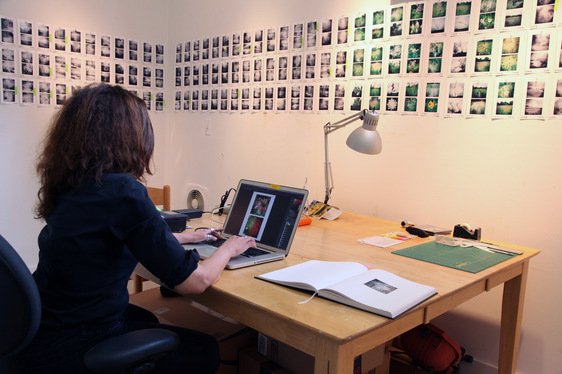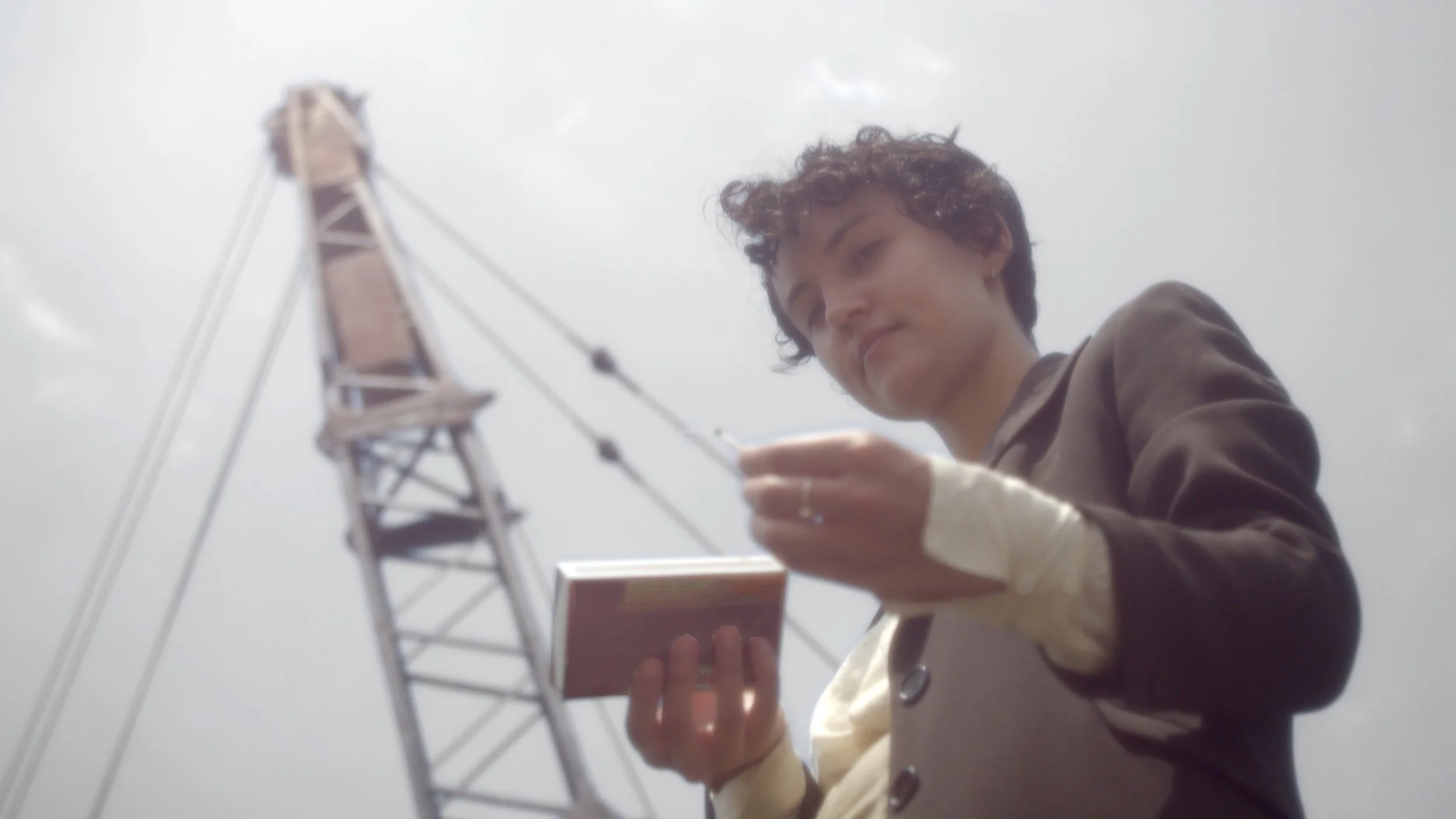Abound Box
Directed by SHERI WILLS
United States of America, 2015
Experimental
A cascade of small moments that live within the margins of experience.
Read our interview with Sheri below to learn more about the film.
SHERI WILLS
Est. Reading Time: 7 Minutes
MARK (M) Tell us a little about yourself - when did you become interested in film and filmmaking?
SHERI (S) I’m an experimental filmmaker and video artist: I often make multi-channel site-responsive video and sound installations, in addition to single-channel pieces like Abound Box. When I was a child I thought I wanted to be an astronomer because I was fascinated with the night sky. But it was the poetry of the stars and the experience of looking at points of light in a deep, rich field of infinity that was at the core of that interest. When I got to college and discovered experimental filmmaking, there was no turning back.
On Her Practice
M I’ve read your biography which provides an incredibly interesting insight into your artistic approach and practice. Please describe your practice here for readers and if it’s okay, specifically elaborate on this line within your statement ‘I see my work in the tradition of women’s lap craft’ - I would love to learn more about this perspective.
S For me, working with available resources and collaborating with the environment allows me to tap into the deepest well of creativity. I’m happiest when making work is integrated with my daily life, and I usually don’t require a massive budget or large crew of people to make the work I’m interested in. I also really enjoy the meditative qualities of repetitive craft - hand-painting film frames, moving pixels frame-by-frame. It can be labourious, even boring, but I find it’s time where I think very deeply and carefully about the work, which I believe becomes a part of the piece in a meaningful way.
To me, this practice is a lineage that is more related to women’s lap craft than to filmmaking tradition. Lap craft is defined by being human-scale - it’s the kind of work that you can pick up and put down quickly as the many demands of life push and pull you, and it’s often personal and encoded with meaning. For the women who were making domestic items to keep their families safe and warm, lap craft was both practical and beautiful. While my work does not have a pragmatic or domestic purpose, I very much respect this tradition and like to think I am putting into it the care and love that the women of the past inspire in me.
M After reading your statement and watching your film, I’m reminded of the quote ‘what is life but fleeting moments?’ I know the answer may be fairly obvious in certain respects but please tell us more about your interest in capturing and showcasing brief/fleeting moments that live within the margins of experience - why do you think it’s important?
S We live in an ever-increasing hegemonic global culture with media, algorithms and advertising more rapidly spreading pervasive and invasive messages as well as ideas of how we should think, behave and even understand what is ‘real’.
From a very early age, I have been extremely uncomfortable with the cultural norms that are messaged everywhere – they don’t reflect my experience and obviously I am not alone in that.
My small-scale work is not shouting out a big political message (although I think that work is essential too). Instead, by ‘capturing and showcasing brief/fleeting moments that live within the margins of experience’, it’s my intention that the work is its own form of resistance - in the process of making, in the form itself and in the content. That the work gives voice to experiences that are real, valid and meaningful, precisely because they are neither dominated nor dominating. You have to look for them, be attentive to them.
S I hope to make work that opens up the possibility for people to notice things in their everyday lives. I explore the material, physical and philosophical potentials of cinema with the hope that they will reveal small moments that often go unseen and pull forward the emotional content of abstract imagery. I hope that when people experience my work, they will engage differently with the act of seeing, and afterwards perhaps open to seeing things they had not previously noticed.
As an example of how this works in my installation work - instead of darkening the space for video projections, I worked with the existing, natural light as an essential component of the installation. By projecting video imagery into the daylight, the video was often only faintly visible, in the shadow areas, as the piece instead drew the viewer’s attention to the existing light and its material qualities.
M I would love to learn more about the material and physical components of your work. Please let us know what makes you choose particular objects to place/lay on unexposed film - what qualities do they possess that spark your intrigue and ultimately compel you to expose them?
S When I first started making photograms I wanted to place interesting things on the film. I very quickly exhausted my supply of interesting things. One night I just wanted to expose some film so I used the sweepings from the kitchen floor like garlic skin, random dirt and dust. Of course, this looked far more interesting than anything else I previously tried!
So using things that were already around me in the environment became important, things that were usually overlooked or dismissed as ‘trash’. When I lived in a house that had a garden, I would pull things up from the ground. It is super interesting to place damp organic material on the film because it creates an image that (I think) is a hybrid of phytography and photogram. That’s something I plan to explore more, and I’m excited for Karel Doing’s forthcoming Phytography book.
For Abound Box I was really interested in the colour red so I purchased a bunch of red flowers that I also dampened and mixed with other stuff (sweepings). I’m not a purist that needs everything to be found!
‘I hope that when people experience my work, they will engage differently with the act of seeing, and afterwards perhaps open to seeing things they had not previously noticed’
— Sheri Wills
On Inspiration
M What are some of the films and who are some of the filmmakers that inspire you, and why? Let us know if you used certain movies as references for this film.
S I really love early cinema and the experimental approaches people took before the conventions settled in. Maya Deren and her relationship to the camera/subject has been a big inspiration.
Jonas Mekas, Paul Sharits, the Brothers Quay, Su Friedrich, Apichatpong Weerasethakul, Sky Hopinka, Cauleen Smith, Ja'Tovia Gary, and Tomonari Nishikawa are just some of the filmmakers whose work makes me super excited about the potential of the medium.
Meshes of the Afternoon (1943) by Maya Deren
Memoria (2021) by Apichatpong Weerasethakul
On The Future
M What are you planning to make next?
S My current projects are always top-secret (even to me) until they are finished ;) But I’m always working on something.
Mark’s Final Thoughts
So many fantastic insights and takeaways - I have a greater understanding of the connection between her artistic practice and the tradition of women's lap craft, both of which are hand-crafted, repetitive and essentially done in the spirit of giving and service. I really love the example Sheri provides about emphasizing existing daylight in her installation work because it reflects the fact that her art is truly focused upon a greater cause than itself. I understand the ultimate purpose of all art is to serve but I think Sheri does this in a unique way.
Very interesting to learn that Sheri uses everyday sweepings as key materials - I would've never guessed but it perfectly coincides with her aim to expose the forgotten and overlooked aspects of life within her practice.
I love Maya Deren and I'm excited to learn more about the different filmmakers that Sheri mentioned as inspirations.
Want to Learn More? Click here for insight into Sheri’s process of crafting the film’s sound design.
The founder of Hommage, Mark Shaba published this interview on 03.02.2022. Mark is a filmmaker from Victoria, Australia. He respectfully acknowledges the past and present traditional owners of the land on which he creates, promotes and screens art, the Wurundjeri people of the Kulin nation who are the custodians.


















